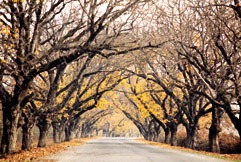|
Summer 1998 (6.2) Revisiting History by Gara Ahmadov
Findings at Gabala When Gaziyev's expedition unearthed the "craftsmen quarter" of ancient Gabala, they found huge pottery ovens, hearths, pottery, construction materials, large basins, water pipes and precious metals. They also found glassware and seals from Greece, Egypt, Syria, India and Rome, showing that Gabala was linked commercially with other parts of the world. Another significant find was a treasury dating back to the 3rd century AD. Some of the silver coins found there have Alexander the Great's profile but most coins date to the Sasanid period and bear the name of Bahram Shah the 2nd (276-293). The expedition also uncovered the remnant of a pir (religious place) which over the centuries had been used for Christian, pagan and Muslim worship. Nearby graves and catacombs show that in various periods the population practiced paganism, fire-worshipping, Christianity and Islam. This finding fits Gabala's profile as a multicultural city. As the ancient capital of Albania (not related to the European country of the same name), it was the home for people from many different tribes and nations, and therefore different religions. Visiting Gabala Today Kohmurad and the surrounding hills were once used as lookouts. If the city was in danger of being invaded, the person stationed at the lookout warned the population by sending up smoke if it was daytime or building a large fire if it was nighttime. The modern town now known as Gabala (formerly called Gutgashen) took ancient Gabala's place as the regional center much later. Today most of the archeological findings from the ancient city are preserved in the History Museum in modern Gabala. Some of the artifacts are displayed at special exhibitions. If you have extra time after
visiting these sites, stop by the home museum of Ismayil bey
Gutgashinlin, an 18th century Azeri writer. Another local landmark
is a large Russian radar station that, oddly enough, still operates.
This huge complex can be seen from the road quite a distance
away. In the past, it was part of the Soviet Union's southern
defense system. |

